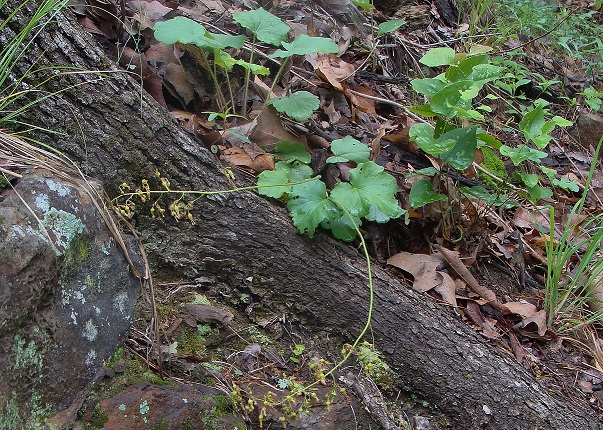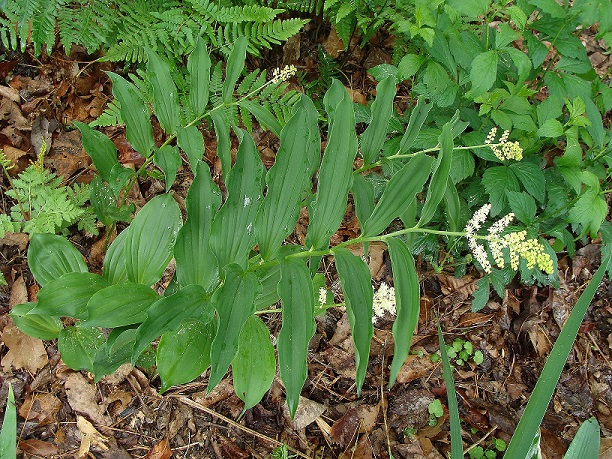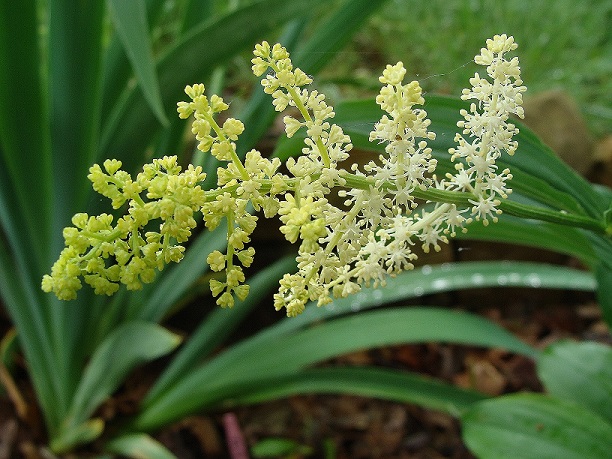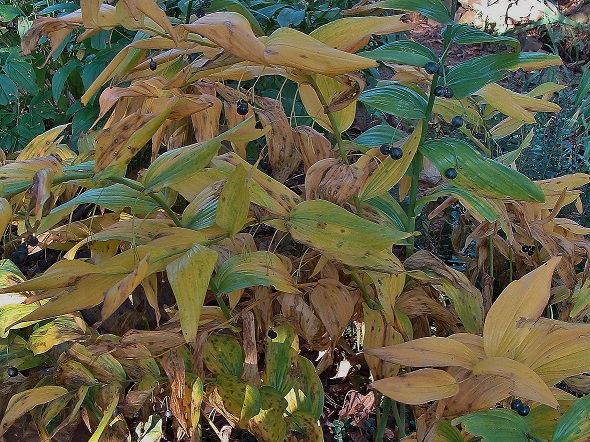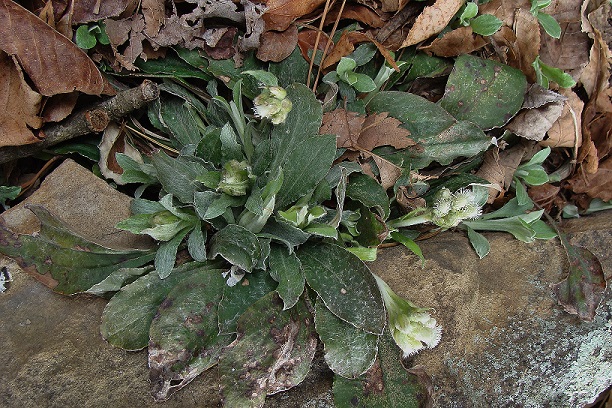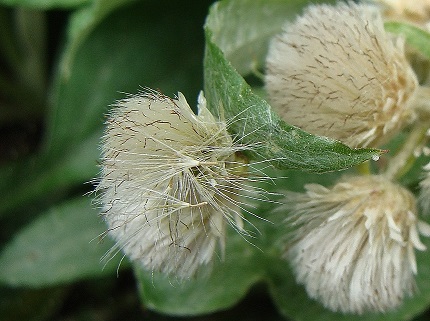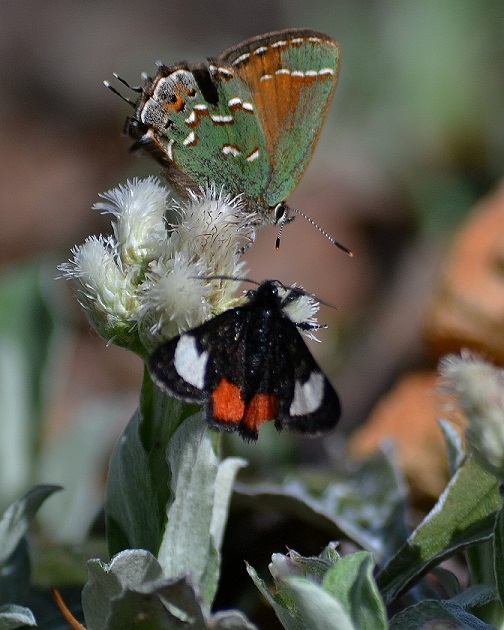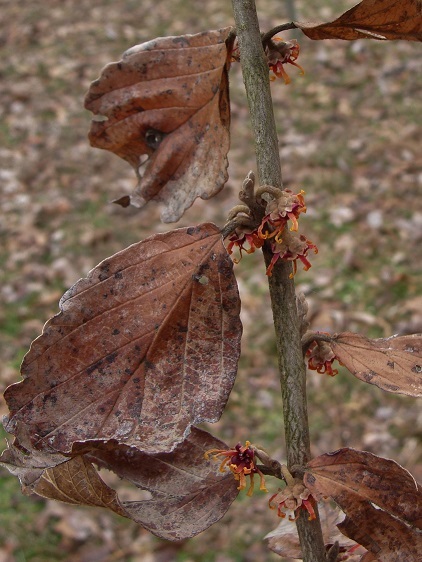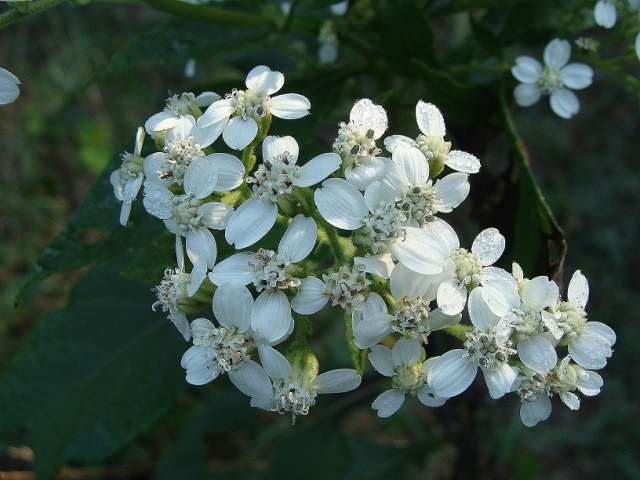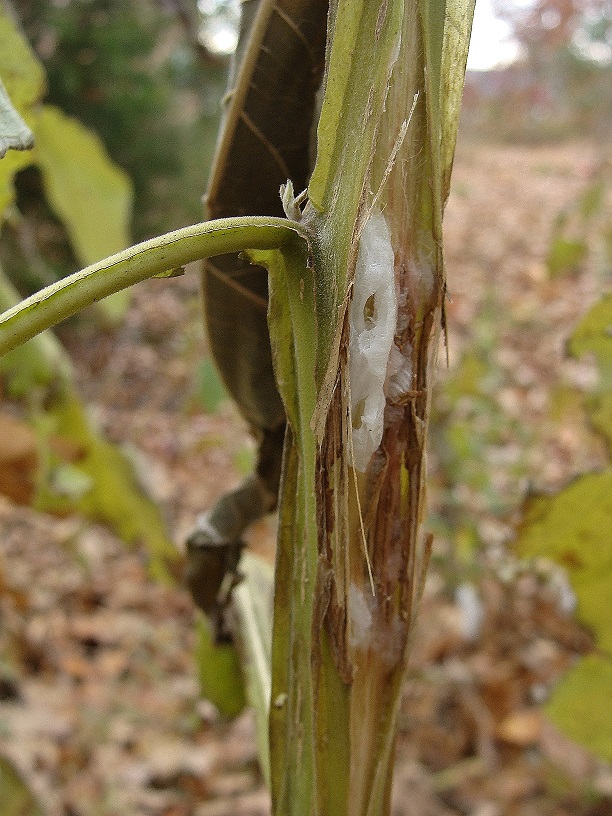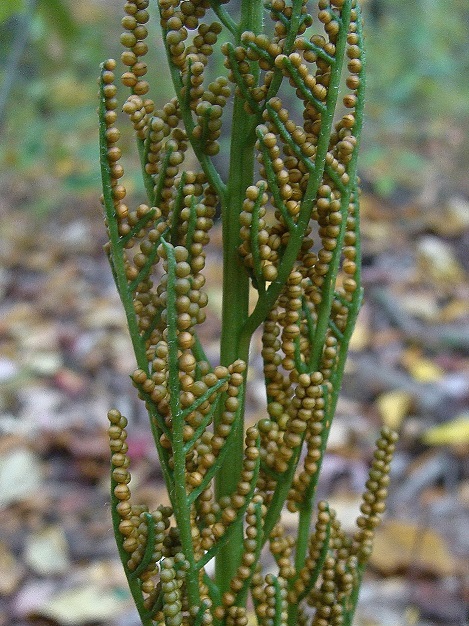American alumroot (Heuchera americana) of the Saxifragaceae (Saxifrage) Family occurs from northeastern Texas to eastern Nebraska and eastward to the Atlantic. In Arkansas, it occurs in the northwestern half of the state and several counties in the southwest. This perennial, herbaceous plant in its natural habitat grows in crevices of rocky cliffs and outcrops in sun to partial shade as well as in dry, well-drained rocky or sandy soils. It is also called rock geranium because of leaf resemblances. (The family name, from Latin, translates to “rock breaker”.)
The low-growing basal leaves have long petioles and the tall leafless flowering stalks rise from fleshy branching rhizomes. Leaves are somewhat evergreen, with old leaves still green when new leaves appear in winter. Leaves are rounded to palmate with only slight indentions of edges showing the palmate shape. Leaves are a medium green with the planar surface being somewhat undulating and soft to touch. Leaf edges are irregularly saw-tooth/notched. Dense, spiny-looking soft hairs are obvious on petioles (on var. hirsuticaulis…var. americana has glabrous to nearly glabrous petioles), extending onto vein ribs on the underside, and stems. Reddish winter leaves and petioles are less hairy or hairless. In its natural habitat, a plant typically has few leaves and flowering stems as a result of its tight living quarters. Leaves reach 8 to 10 inches in length while flowering stems reach two feet.
Flower stems appear in April and May with flowers on the upper third of sticky stems. Greenish, bell-shaped, drooping flowers (¼ inch long) occur in loose, slender, branching clusters (panicles); usually 4-5 flowers on each branch. Pistils and stamens extend noticeably outside the petals and are greenish and pinkish. Tiny seed, produced in capsules, mature in summer. Spent flowering stems lie on the ground into the next year.
American alumroot works well in shady to partially sunny gardens that have well drained sandy or rocky soil. In a garden, plants are durable, being adaptable to cold temperatures and dry conditions. With more room to grow, garden plants form a thick and attractive (foot-or-more wide and tall) mound of leaves and can work well as individual plants or in groups. Garden plants may produce many flowering stems, up to 3 feet tall, that create a lacy form above mounded leaves. The almost evergreen nature of the plants are an attribute over stark winter months. Dead flowering stems can be easily removed, if desired. (Various Heuchera species hybridize readily and many cultivars are on the market.)
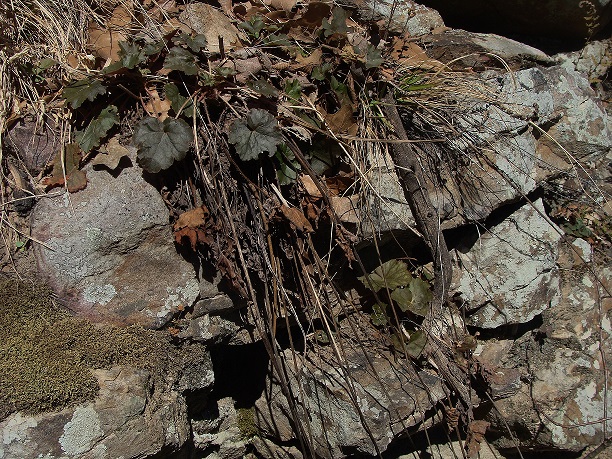
American alumroot in winter, growing in natural habitat; reddish new leaves with old leaves and stems remaining.

American alumroot growing in a home native plant garden in mid-spring; a significantly larger plant with many flowering stems.
Several other alumroots are also found in Arkansas. A variety of hairy alumroot (Heuchera villosa), called Arkansas alumroot (var. arkansana), is reported to occur only in Arkansas. It is generally found on moist, shady bluff areas of the Ozarks on shale and sandstone substrates. It has large leaves with more jagged, pointed margins, and it blooms in the fall with flowers clustered tightly on shorter stems.
Small-flower alumroot (Heuchera parviflora var. puberula), grows primarily in the north-central part of the state. It also blooms in the fall, but has smaller, rounded leaves and a more diffuse inflorescence. It grows primarily on moist, calcareous bluffs.
Article and photos by ANPS member Sid Vogelpohl

